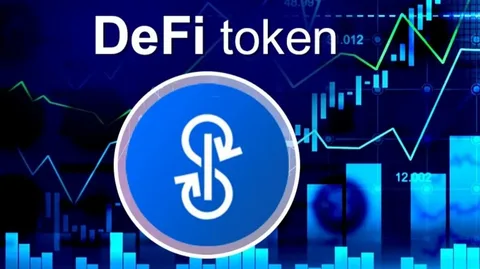Introduction
In the summer of 2020, the world of decentralized finance (DeFi) witnessed an unprecedented surge in activity and innovation, a period now widely known as “DeFi Summer.” This transformative period saw the rapid growth of decentralized protocols, yield farming, and a myriad of other financial products that operate without intermediaries.
As we step into 2024, signs are emerging that its Summer may be making a powerful comeback. With new insights from Steno Research, a leading think tank in the decentralized finance space, we explore the factors contributing to this resurgence and what the future holds for it.
In this comprehensive analysis, we’ll delve into the driving forces behind the renewed interest in decentralized finance, the role of emerging technologies, and how the insights from Steno Research provide a roadmap for investors and enthusiasts alike. Whether you are a seasoned DeFi participant or a curious observer, understanding these trends is crucial for navigating the evolving financial landscape.

The Rise and Fall of DeFi: A Brief Overview
The first DeFi Summer was marked by explosive growth. From the launch of new protocols like Uniswap and Compound to the popularization of yield farming, the decentralized finance ecosystem expanded at an astonishing rate. At its peak, the total value locked (TVL) in DeFi protocols exceeded $90 billion, reflecting the trust and capital that flowed into these decentralized platforms.
However, this rapid expansion also led to challenges. Issues such as high transaction fees on Ethereum, security vulnerabilities, and regulatory scrutiny began to take a toll. By late 2021 and early 2022, the initial frenzy had cooled, and the market saw a significant correction. Despite this downturn, the foundational principles of DeFi—transparency, accessibility, and permissionless finance—remained intact.
Steno Research’s Analysis of DeFi’s Evolution
Steno Research has been at the forefront of analyzing the DeFi space. Their latest reports highlight that while the initial hype may have subsided, the underlying technology and potential of decentralized finance have continued to evolve. According to their findings, the next wave of it growth is likely to be more sustainable, driven by technological advancements, improved security measures, and more robust regulatory frameworks.
Steno Research also points to the maturation of decentralized finance protocols. Unlike the early days, where speculative activities dominated, the focus is now shifting toward real-world applications. For example, decentralized insurance, prediction markets, and cross-chain interoperability are gaining traction, offering new use cases that extend beyond traditional financial products.
Key Drivers of the DeFi Resurgence
The resurgence of DeFi in 2024 can be attributed to several key factors, many of which are underscored by insights from Steno Research.
1. Layer 2 Solutions and Improved Scalability
One of the biggest challenges during the first DeFi Summer was the scalability issues on the Ethereum network. High gas fees and slow transaction times made it difficult for average users to participate in the ecosystem. However, the advent of Layer 2 solutions, such as Optimism and Arbitrum, has significantly improved the scalability of decentralized finance platforms.
These Layer 2 solutions offload transactions from the Ethereum mainnet, reducing congestion and lowering costs. According to Steno Research, the widespread adoption of these technologies is a major factor in the renewed interest in it. With lower barriers to entry, more users can engage with decentralized applications (dApps), driving overall ecosystem growth.
2. The Integration of AI and DeFi
Artificial intelligence (AI) is playing an increasingly important role in the evolution of it. From algorithmic trading to automated asset management, AI-driven solutions are enhancing the efficiency and effectiveness of decentralized finance protocols. Steno Research’s reports emphasize the potential of AI to revolutionize the DeFi space by providing more personalized financial services and improving risk management.
For instance, AI-powered DeFi platforms can analyze vast amounts of data to optimize investment strategies or predict market trends, providing users with tools that were previously only available to institutional investors. This democratization of advanced financial services is a key driver of the ongoing DeFi resurgence.
3. Cross-Chain Interoperability
Another significant development highlighted by Steno Research is the rise of cross-chain interoperability. In the early days of its, most protocols were confined to the Ethereum network. However, as the ecosystem has grown, the need for seamless interaction between different blockchains has become apparent.
Cross-chain solutions, such as Polkadot and Cosmos, are enabling different blockchains to communicate and share information, creating a more interconnected and robust DeFi ecosystem. This interoperability allows users to move assets across chains easily, access a wider range of financial products, and mitigate risks associated with any single blockchain.
4. Regulatory Clarity and Institutional Adoption
One of the most significant barriers to DeFi’s growth has been regulatory uncertainty. However, as decentralized finance continues to mature, regulators worldwide are beginning to develop clearer frameworks. According to Steno Research, this regulatory clarity is paving the way for greater institutional adoption of it protocols.
Institutional investors, who were previously hesitant due to the lack of regulatory oversight, are now entering the space in greater numbers. This influx of institutional capital not only provides liquidity but also adds legitimacy to the DeFi ecosystem, attracting even more participants.
The Future of Decentralized Finance: What to Expect
With the resurgence of DeFi in full swing, what can we expect in the coming months and years? Steno Research provides several insights into the future trajectory of decentralized finance.
1. The Growth of Decentralized Autonomous Organizations (DAOs)
Decentralized Autonomous Organizations (DAOs) are set to play a pivotal role in the next phase of DeFi. These organizations, governed by smart contracts and decentralized governance structures, allow for more democratic decision-making processes within the DeFi ecosystem. Steno Research notes that the proliferation of DAOs will lead to more community-driven projects, reducing the influence of centralized entities and aligning more closely with the core principles of decentralized finance.
2. The Expansion of Decentralized Derivatives Markets
Derivatives are a crucial component of traditional financial markets, and their decentralized counterparts are beginning to gain traction within the DeFi space. Platforms like Synthetix and dYdX have already shown the potential for decentralized derivatives trading. Steno Research predicts that as these platforms continue to evolve, we will see a significant increase in the variety and volume of derivatives available on decentralized exchanges.
3. Enhanced Security Measures
Security has always been a concern in the DeFi space, with numerous high-profile hacks and exploits making headlines. However, the ecosystem is learning and adapting. Steno Research highlights the development of more sophisticated security protocols and insurance products designed to protect users from potential losses. As these measures become more widespread, user confidence in DeFi platforms is expected to grow, further fueling the resurgence.
4. Integration with Traditional Finance
Finally, the integration of it with traditional financial systems is expected to accelerate. Steno Research suggests that we will see more partnerships between DeFi protocols and traditional financial institutions, leading to a hybrid financial ecosystem that leverages the strengths of both worlds. This integration could result in new financial products that combine the transparency and accessibility of DeFi with the stability and trust of traditional finance.
Conclusion
The DeFi Summer of 2024 is shaping up to be a pivotal moment in the evolution of decentralized finance. With insights from Steno Research, we can see that the future of DeFi is bright, driven by technological advancements, regulatory clarity, and increasing institutional interest. As we move forward, the decentralized finance ecosystem is poised to become more robust, secure, and accessible than ever before.
Whether you are an investor, developer, or simply someone interested in the future of finance, now is the time to pay attention to DeFi.
The insights from Steno Research provide a valuable roadmap for understanding the trends and opportunities in this dynamic space. As always, we invite you to share your thoughts and comments below—let’s continue the conversation on the future of decentralized finance!



